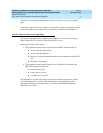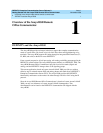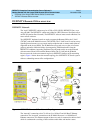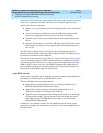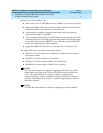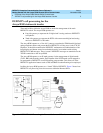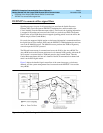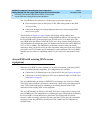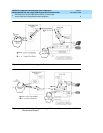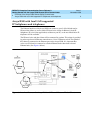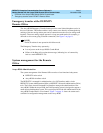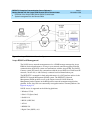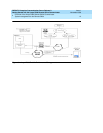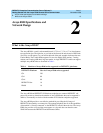
DEFINITY Enterprise Communication Server Release 9
Getting Started with the Avaya R300 Remote Office Communicator
Issue 1
November 2000
Overview of the Avaya R300 Remote Office Communicator
7Avaya R300 with existing WAN access equipment
1
The Avaya R300 can be connected to a WAN using two principle topologies:
■ Direct connection from its WAN ports (T1/E1, BRI, analog trunk) to the WAN
service provider
■ Connection through your existing equipment that serves as the principle WAN
service access point.
The illustration in Figure 3 on page 6 depicts the topology which could be more
commonly used in deployments of newly configured Remote Offices. This topology has
the Avaya R300 serving as the principle point of WAN access via its WAN ports. The
Avaya R300 offers the ability to offer both T1/E1 ports, along with two analog trunk ports.
The configuration of available port types will depend on the model of the Avaya R300 unit
(2-T1 or 2-E1 or 6 BRI). The configuration of network resources (what you actually
subscribe to from your WAN service provider) determines what ports on the Avaya R300
are actually used. T1/E1 trunks may be configured in a fractional mode. The Avaya R300’s
Ethernet port can connect to subtending router(s) if your local LAN configuration is this
size.
Avaya R300 with existing WAN access
equipment
When the Avaya R300 co-exists (subtends) in an office environment with existing WAN
access concentration/routing equipment, two configurations are available:
■ Connection via its Ethernet port over to the local IP LAN (see Figure 4 on page 8)
■ Connection via its Serial WAN port (V.35) over to the Serial input of a WAN router
(see Figure 5 on page 8)
The Avaya R300 offers the ability for DEFINITY call routing to use local access trunks.
These local access trunks may be directly connected to a WAN service provider network,
or the T1/E1 WAN trunks may be subtending to an existing drop and insert T1/E1
connection on the existing WAN access equipment.
The Avaya R300 offers the ability to offer both T1/E1 ports, along with two analog trunk
ports and BRI ports. The configuration of available port types will depend on the whether
the Avaya R300 is a North American or global unit. The configuration of network
resources (what you actually subscribed to from your WAN service provider) determines
what ports on the Avaya R300 are actually used. T1/E1 trunks may be configured in a
fractional mode.



